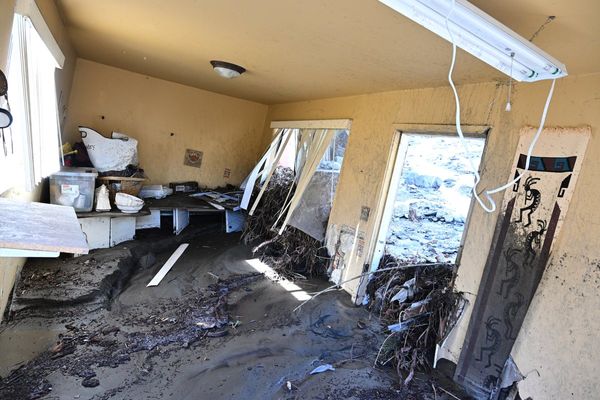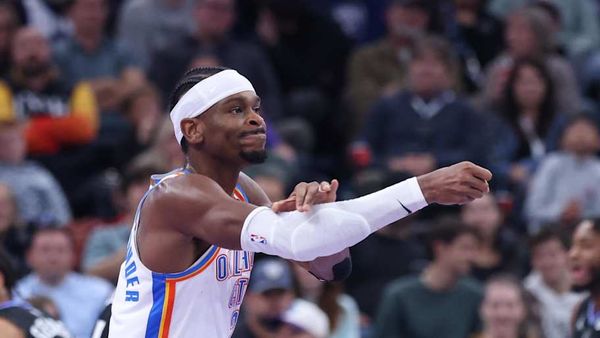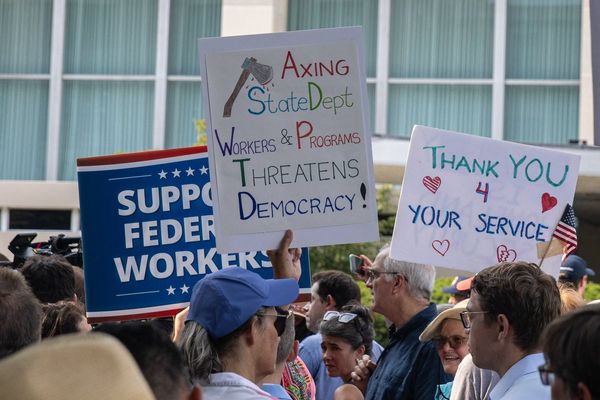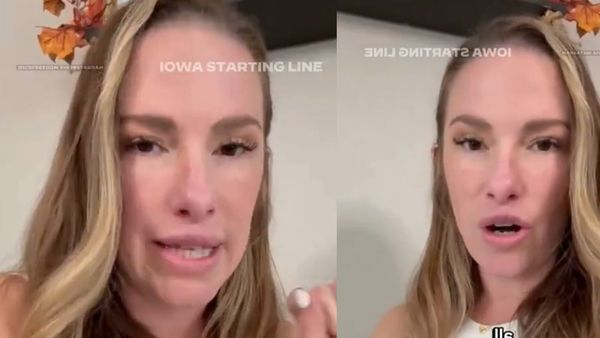
If you took out a government-backed mortgage over the last two years, you’re probably watching interest rates fall and wondering when to refinance. But before you take the refi plunge, you need to learn about a government program that can slash your monthly mortgage payments without the headache of endless paperwork or credit checks.
Intrigued? Meet the streamlined refinance. These programs are transforming the way homeowners with certain government mortgage loans—like a Federal Housing Administration (FHA) mortgage—get financial relief, including people who thought they’d never qualify.
“An FHA streamline is a unique loan program because there is no income qualification or appraisal needed,” says Brian Green, a mortgage lender and licensed loan officer in Sacramento, Calif. “It’s only required to have at least 3 months of on-time payments on your mortgage and no more than one late payment in the past 12 months.
Like any other refinancing, with the streamline refinance you take out a new mortgage and pay off your current mortgage loan. But the process of applying is simpler than with a standard refinance, and you can save money on fees. Even if your home is underwater, you can still qualify for a streamline refinance.
What is a streamline refinance? Who qualifies?
Streamlined refinancing programs reduce the amount of documentation and underwriting that lenders need to do by removing requirements for appraisals and—in some cases—credit checks or income verification. The result is a faster and cheaper process for homeowners.
To qualify, you need to:
- Hold a government-back mortgage: In addition to FHA-backed loans, mortgages backed by the U.S. Department of Agriculture’s (USDA) or the Department of Veterans Affairs (VA) also qualify.
- Refinance into the same type government-backed mortgage: The streamlined refinance programs don’t let you switch to a different type of government-backed loan or a conventional, non-government mortgage.
- Meet the program’s requirements: We’ll cover more program-specific details below.
As with other types of refinancing, you can compare rates and offers from multiple lenders to get the best deal when you refinance.
How an FHA streamline refinance mortgage works
The FHA streamline refinance allows you to refinance an FHA loan without a new home appraisal. The lack of appraisal can save you time and money because the cost of a home appraisal is usually included in closing costs when you refi. It can also be helpful if your home value has decreased and you’re underwater on your home—you owe more than its current value—because you can refi without covering the difference.
There are two types of FHA streamline refinancing:
- Non-credit qualifying: Doesn’t require income verification or a credit check, although some lenders may still want these.
- Credit-qualifying: The lender must verify your income, check your credit, and consider your debt-to-income (DTI) ratio.
The credit-qualifying route is required in certain circumstances, such as when you want to remove a borrower from the mortgage or if changing the repayment term will increase your payments by more than 20%. Otherwise, you might be able to use the non-credit qualifying refi.
In either case, you may need to pay a new upfront mortgage insurance premium (MIP) fee. However, you might receive a refund from your previous upfront fee if your current FHA loan is fewer than three years old. Additionally, you might benefit if you got your current loan before March 20, 2023, because monthly MIP costs are lower today.
Basic for FHA
There are a few basic requirements for both types of FHA streamline refinancing:
- You must be refinancing an FHA-insured mortgage
- You can’t be behind on your mortgage payments
- Your monthly principal, interest, and mortgage insurance payment must decrease by 5%, or you have to switch from an adjustable-rate mortgage (ARM) to a fixed-rate loan
- You can’t take more than $500 out if you’re doing a cash-out refi
- Individuals can’t be refinancing the mortgage on an investment property
- At least six months have passed since your current loan’s first payment, and you’ve made at least six payments
How a VA interest rate reduction refinance works
The streamline VA loan refinancing program is also called an interest rate reduction refinance loan (IRRRL)—pronounced “Earl.” Similar to getting a VA loan to purchase a home, you’ll have to find and apply through an eligible VA-approved lender.
The VA generally doesn’t require lenders to get an appraisal, check your credit, or verify your income for an IRRRL. However, lenders can choose to set stricter requirements, such as minimum credit score and maximum loan-to-value (LTV) ratio requirements.
You may need to pay VA funding fee for the IRRRL loan, which is 0.5% of the loan amount. You can either pay this at closing, or roll the fee and other closing costs into the new loan. There are a few basic requirements for IRRRL refinancing:
- You must refinance an existing VA loan
- You have to live in or have previously lived in the home
- You can’t increase your existing loan’s term by more than 10 years
- Your new loan must have a lower interest rate unless you’re refinancing an ARM
- Your monthly principal and interest payment must decrease unless you’re refinancing an ARM, refinancing into a shorter term, or including the cost of energy-efficient improvements in your new loan
- At least 201 days have passed since your current loan’s first payment
How a USDA streamline refinance works
There are two options for USDA home loans—USDA streamlined and streamlined-assist refinancing. Both options are available with USDA direct home loan and USDA guarantee home loans, and you can use a streamline refi even if your home is no longer in an area that’s considered rural.
The streamline-assist could be slightly easier because it doesn’t require lenders to perform a credit check or income verification. Although, if you have a USDA guaranteed loan, lenders could set stricter requirements and choose to run these checks.
The streamlined option may require income and credit checks, but it could be the better choice if you want to refinance and your monthly payment won’t decrease by at least $50.
View this interactive chart on Fortune.com
The streamlined and streamlined-assist USDA refinancing programs share a few basic requirements.
- You must be refinancing a USDA loan and live in the home
- Your current loan must be at least 12 months old
- Your new loan must have a fixed interest rate and a 30-year term
- You have to meet the household adjusted income requirements
- You can’t take cash out based on your equity in the home
3 ways to prepare for a streamline refinance
Streamline refinancing won’t require as much time or documentation, but you’ll still want to prepare and compare offers.
- Check today’s refi rates: Find out if refinance rates are lower than your mortgage’s current rate. Refinancing might make sense even if rates haven’t dropped significantly. But the bigger the difference, the more your potential savings.
- Find lenders and compare offers: Find eligible lenders that offer streamline FHA, VA, or USDA refinancing. Try to get prequalified or preapproved with several lenders to compare their refi offers. Green recommends doing some research before jumping in: “Checking online reviews, such as those on Zillow or similar platforms, can provide valuable insights into other clients' experiences, helping you make a more informed decision.”
- Consider points and credits: You might have the option of buying mortgage points, also called discount points, to get an even lower interest rate. Or, to receive credits that can go toward your upfront costs in exchange for accepting a higher interest rate. If you see advertisements for no-cost refinancing, it’s generally because the lender is giving you a higher rate in exchange for credits.
When you might not want a streamline refinance mortgage
Even if you could qualify for a streamline refinance, you might opt for a more traditional route for several reasons. FHA loans have an annual mortgage insurance premium and USDA loans require an annual guarantee fee, which you’ll pay for with your monthly mortgage payment. Refinancing into a conventional loan with at least 20% equity is one of the few ways to get rid of this extra expense.
“An FHA streamline refinance can be costly due to mortgage insurance premium calculations depending on how long you have owned the house, so make sure to explore all your options and have a lender go through the math,” says Jennifer Beeston, SVP of Mortgage Lending at Guaranteed Rate Mortgage in Coral Spring, Florida.
Additionally, streamline refinancing options don’t let you borrow much more than your current loan’s balance plus closing costs. A non-streamlined cash-out refinance will be a better option if you’re trying to refinance and borrow against your home at the same time.
Refinancing if you don’t have a government-backed loan
Streamline refi options are only available for government-backed loans. You could still refinance a conventional mortgage, and might benefit from a lower interest rate and changing your loan’s terms. Refinancing could even help you get rid of private mortgage insurance if you’ve paid down your balance or your home value has increased.
However, refinancing will generally require an appraisal, credit check, income verification, and many of the same steps you went through with your initial loan. The process might take a little longer than a streamline refi, and you may have to pay for some of these with your closing cost.
Unlike with the streamline refi, you also might struggle to refinance if your credit has dropped, you don’t have a steady income, or your home’s value has decreased.
The takeaway
If you have a government-backed FHA, VA, or USDA loan, you might qualify for a streamline refi that removes some of the standard hurdles and costs. If you’re not sure if a streamline is the best option for you, consult with an experienced mortgage loan advisor.
“Every financial situation is unique, and an advisor can help you determine whether a streamline refinance is your best option or if another loan program might offer greater benefits,” says Green. “They can review your current mortgage, financial goals, and eligibility to provide tailored guidance.”
And don’t forget to shop around because the rates you receive and the fees you’ll pay can still vary from one lender to the next.







